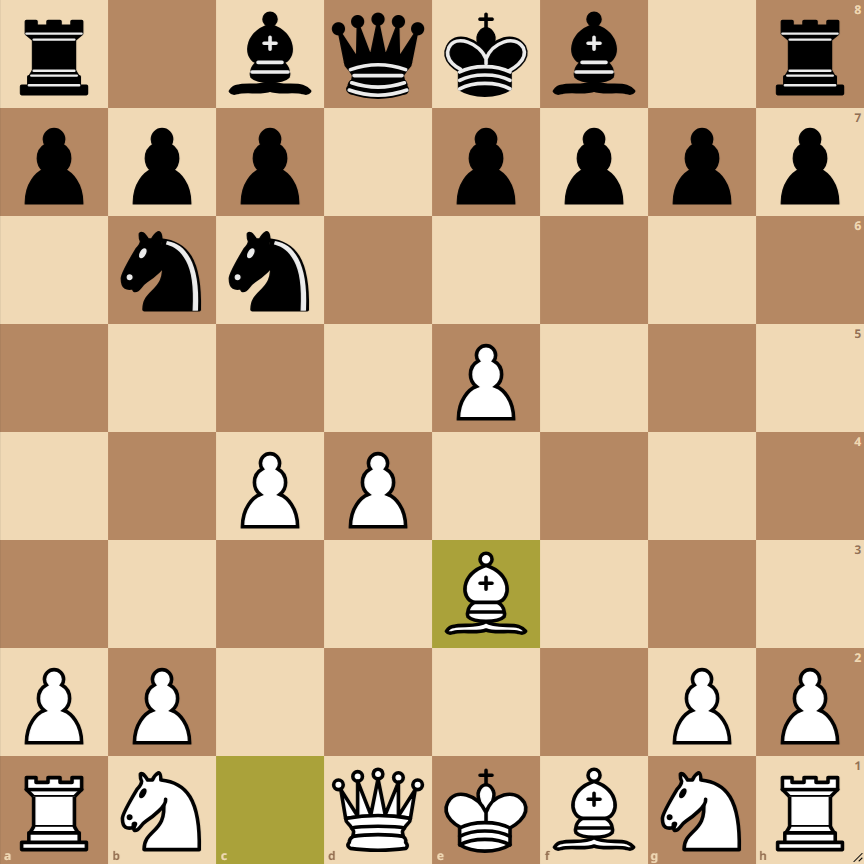How to Play the Alekhine Defense: Four Pawns Attack
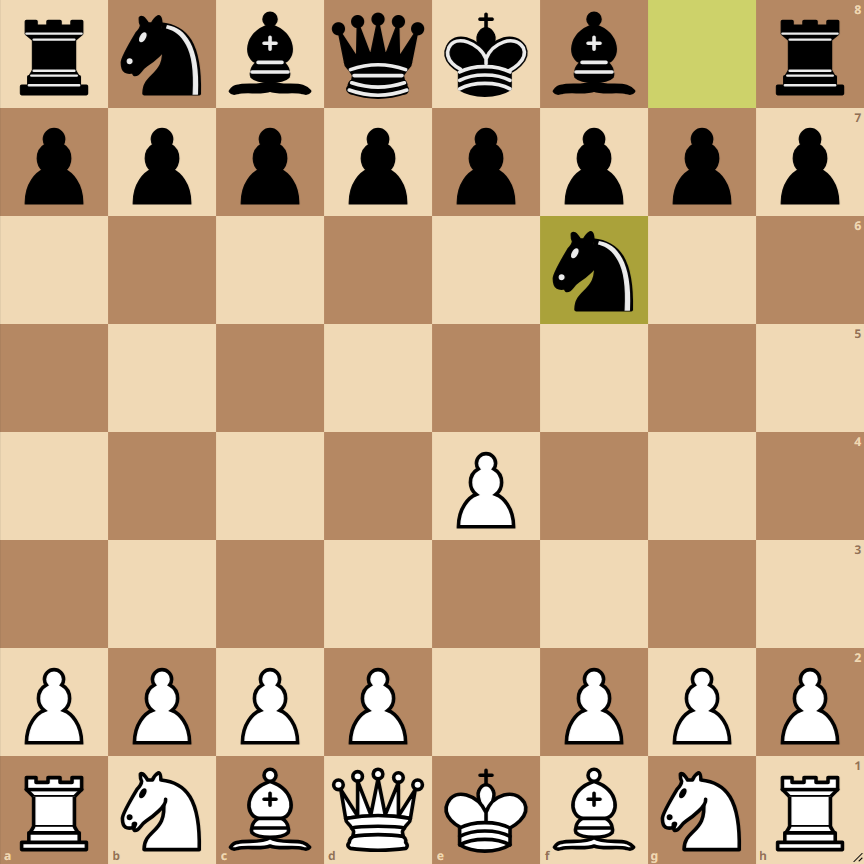
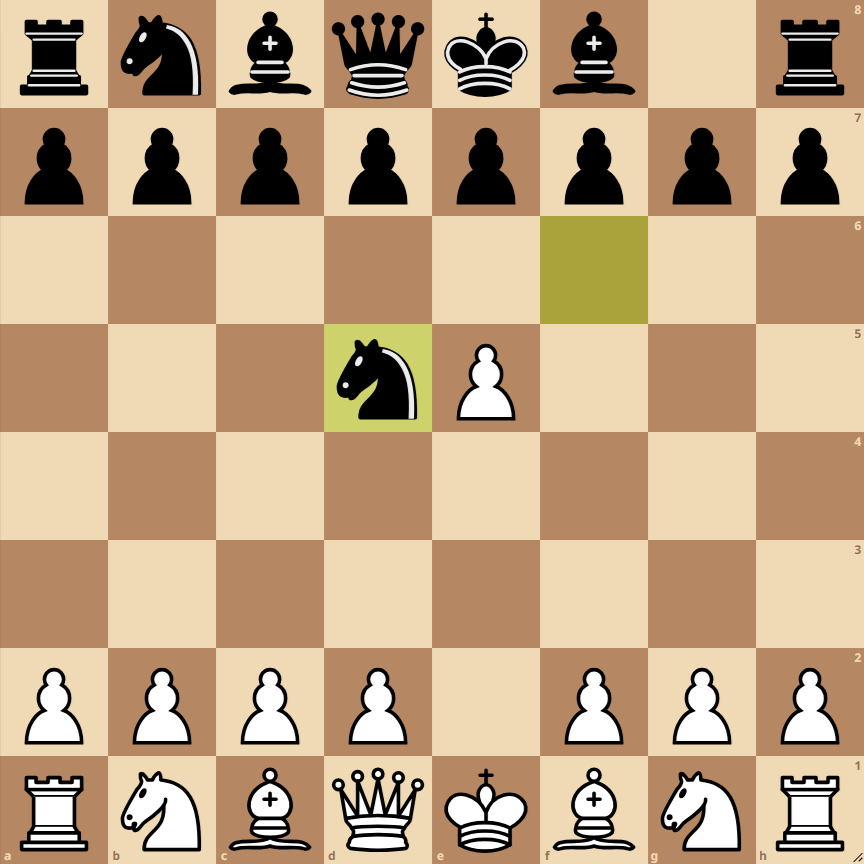
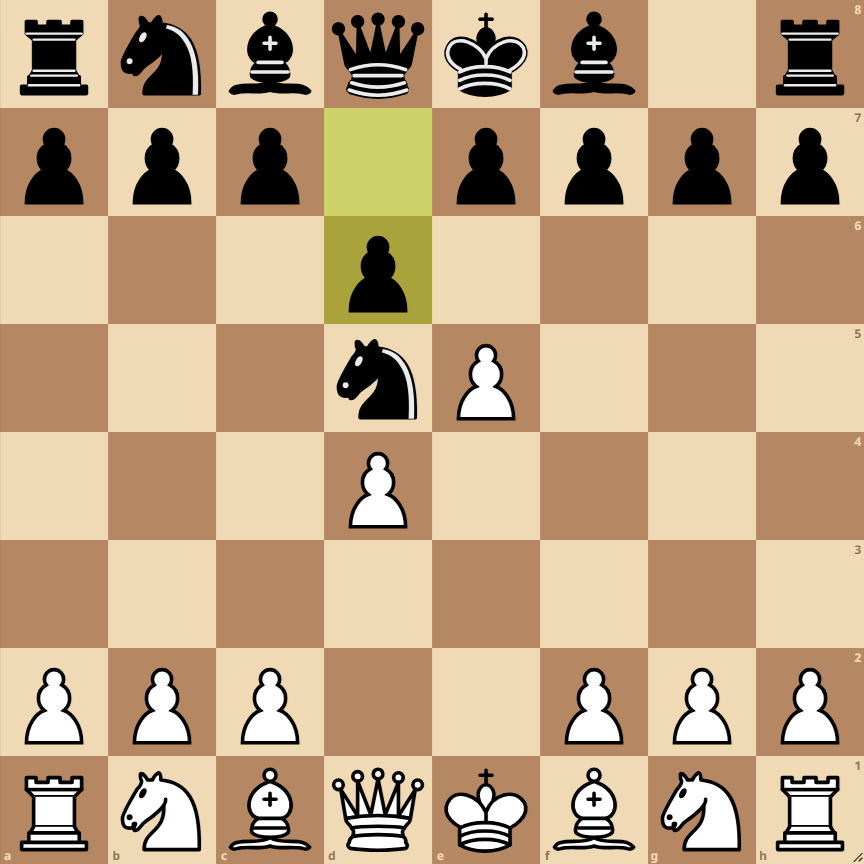
- 1. e4 Nf6: White starts by advancing their king’s pawn two squares, aiming to control the center. Black responds with the knight to f6, initiating the Alekhine Defense, a system that seeks to provoke white into overextending in the center.
- 2. e5 Nd5: White advances their pawn to attack the black knight, which relocates to d5 to continue exerting pressure in the center.
- 3. d4 d6: White reinforces their center with a second pawn. Black responds with d6, preparing to undermine the white center.
- 4. c4 Nb6: White aims to consolidate their center and gain space, while the black knight retreats to b6, keeping relocation options open.
- 5. f4 dxe5: White continues their expansion on the kingside with f4. Black decides to capture the pawn on e5, initiating an exchange in the center.
- 6. fxe5 Nc6: White recaptures the pawn, maintaining pressure in the center. Black develops their other knight to c6, increasing pressure on the white center.
- 7. Be3: Finally, white develops their bishop to e3, aiming to strengthen their central structure and prepare for castling.
Variations of the Alekhine Defense: Four Pawns Attack
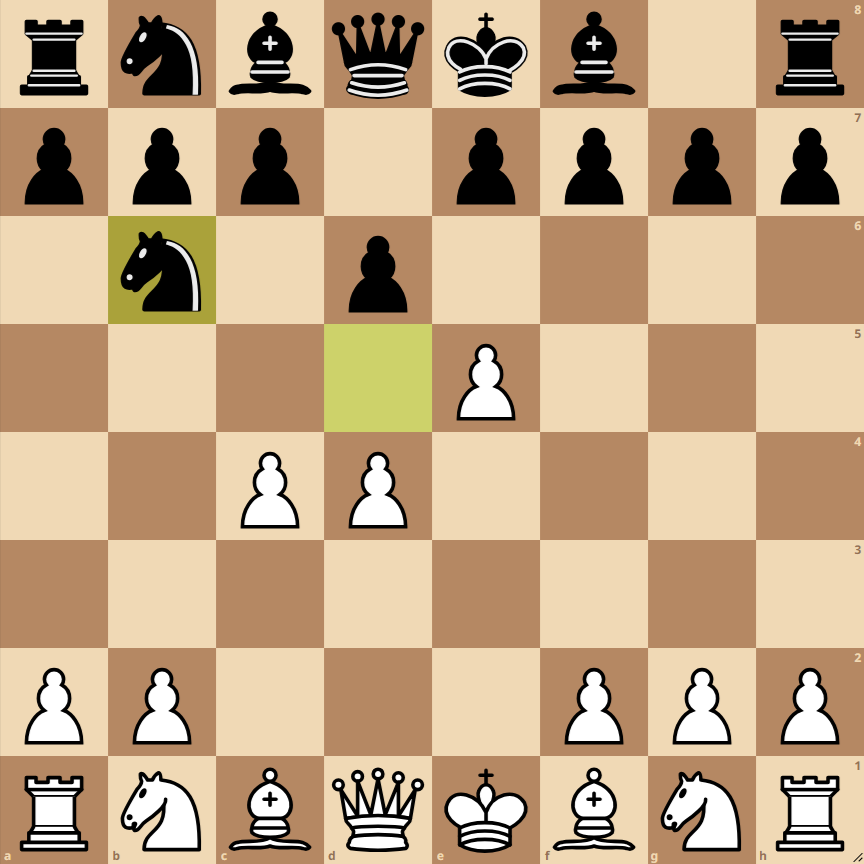
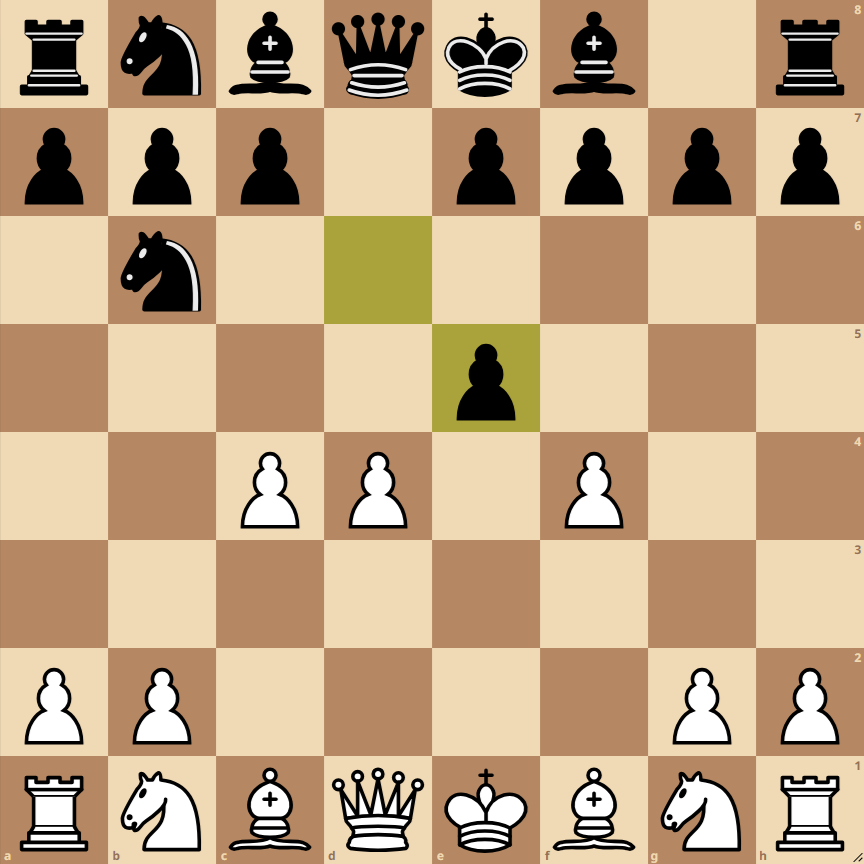
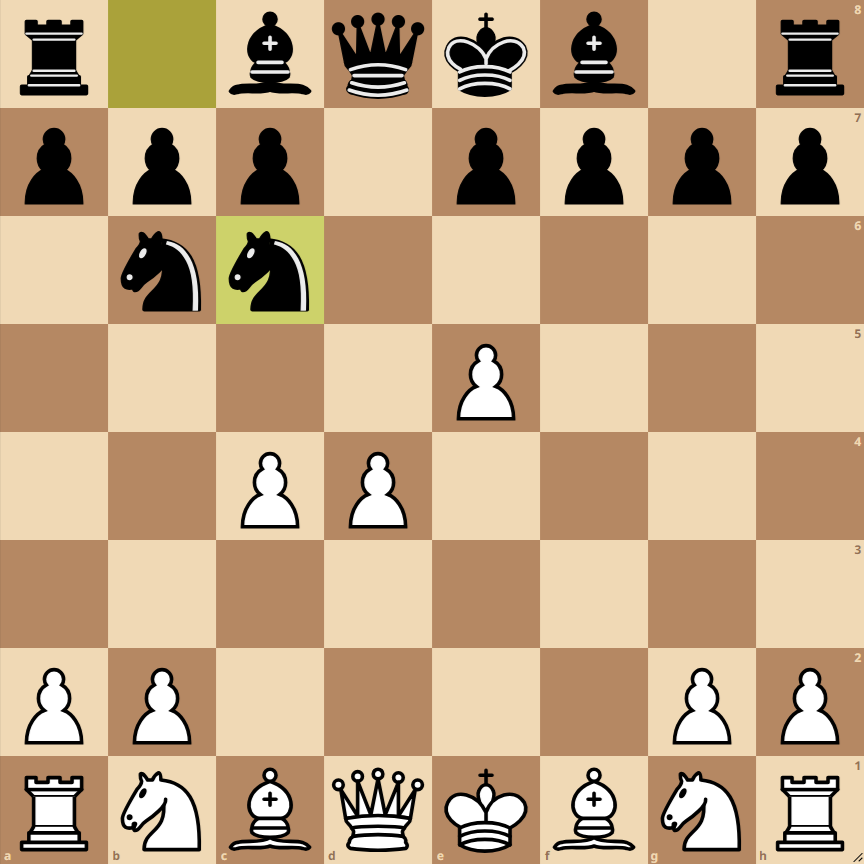
Variation with g6
In this variation, black chooses to fianchetto their king’s bishop with g6, aiming to control more space on the kingside and prepare for long castling. This line leads to a more positional and strategic game.
Variation with e6
An alternative for black is to play e6, aiming to break in the center and facilitate the development of their pieces, especially the queen’s bishop. This variation can lead to more closed structures and complex tactical play.
Variation with c5
Another possibility for black is c5, directly attacking the white center and seeking to activate their pieces quickly. This line often leads to dynamic exchanges and aggressive play by both sides.
Alekhine Defense: Four Pawns Attack, Main Line
Current Position
The position that has developed after 7. Be3 in the Alekhine Defense, Four Pawns Attack, presents dynamic characteristics and tactical opportunities for both sides. At this point, white has aggressively advanced in the center, controlling a lot of space but also exposing certain weaknesses. Black, on the other hand, has opted for a more positional game, aiming to undermine the white central structure and exploit open lines for their pieces.
Strategies and Tactics for White
- Control of the Center: White has established spatial dominance with pawns on d4, e5, and c4. This control provides greater freedom of movement and attacking possibilities.
- Development and Activation of Pieces: With pieces like the bishop on e3 and the potential to develop the f1 bishop to a more active square, white should seek to maximize the effectiveness of their pieces.
- Pressure on the Kingside: Moves like g4 and h4 in the future may be considered to open lines and attack the black king if it decides to short-castle.
Strategies and Tactics for Black
- Counterplay in the Center: Black should be alert to opportunities for counterattacking in the center, especially if white becomes overly committed to their advance.
- Harmonious Piece Development: It is crucial for black to develop their remaining pieces, especially the bishops and the queen, to counter white’s pressure.
- Play on the Flanks: Black can look for opportunities on the flanks, especially the kingside, where white may have weakened due to their pawn advance.
Suggested Next Moves
Nf5: This move develops the black bishop to an active square, pressuring the c4 pawn and aiming at the center. It also prepares for short castling.
g6: A move that prepares fianchettoing the bishop to g7, offering strong control of a diagonal and safety for the black king.
h5: More aggressive, aiming to disrupt potential white pawn advances on the kingside and preparing for a counterattack.

